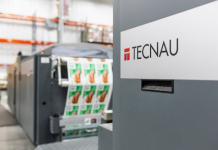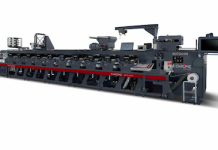Laurel Brunner from The Verdigris Project says we have ISO 16759 (Quantification and communication for calculating the carbon footprint of print media products), published in 2013 and reviewed in 2018. ISO 16759 specifies how to work out the carbon footprint of print, from books to labels, from transactional documents to packaging and everything in between.
The document follows the principles of Life Cycle Assessment, but doesn’t go the whole hog. Instead it focuses on the carbon footprint of print, based exclusively on its production attributes. This means the standard quantifies the ‘processes, materials and technologies required to produce print media products using any form of printing technology’. It’s a generic tool that works for any printing method and for any substrate.
It’s taken a while but interest in calculating the carbon footprint of print is starting to rise. Brand supply teams are finally showing mild engagement with the idea of carbon footprinting their prints, because it could improve production efficiencies and their bottom lines.
Essentially ISO 16579 is a framework for carbon calculators that standardises evaluation methods for all geographies. And for this reason ISO 16759 is of interest to big brand names whose print media production takes place across the globe. Conversations with the likes of Kraft, Diageo, 3M and Johnson & Johnson are beginning, as they expand their process control focus to include carbon footprinting. These organisations are not alone, with Proctor & Gambol, Coca-Cola, Kimberly Clarke and Petsmart also joining the conversation. It can be no coincidence that so many large organisations are keen to learn more about carbon footprinting print media. It’s actually quite exciting.
There is a certain logic to the rising interest. These big brands have led the revolution in colour management and process control for the last ten years. They are about as lean and efficient as they can get. Technology has made it possible for them to cut waste, improve colour consistency across substrates, and save money on inks and materials. The interest in carbon footprinting, as a further means to cut waste and cost is as much about improving their bottom lines, as it is about being environmentally accountable to shareholders and consumables.
This is a good thing because the only way sustainability will be at the heart of any business strategy is if it pays, or at least doesn’t cost, add complexity or cause inefficiencies. Fortunately concepts of what counts as paying are changing to include such things as brand loyalty and the cost of customer retention. Having some means of demonstrating environmental awareness and accountability is a good way to show willingness to both constituencies, and if the data is there too, so much the better.
This article was produced by the Verdigris Project, an industry initiative intended to raise awareness of print’s positive environmental impact. Verdigris is supported by: Agfa Graphics (www.Agfa.com), Digital Dots (www.digitaldots.org), EFI (www.efi.com), FESPA (www.fespa.com), HP (www.hp.com), Kodak (www.Kodak.com/go/sustainability), Practical Publishing (www.practicalpublishing.co.za), Ricoh (www.ricoh.com), Unity Publishing (http://unity-publishing.co.uk) and Xeikon (www.xeikon.com).
This work by the Verdigris Project is licenced under a Creative Commons attribution-noderivs 3.0 Unported licence http://creativecommons.org/licences/by-nd/3.0/
[sc name=”submit-news” ]
Read the top 5 stories weekly on WhatsApp or sign up to our newsletter.
THE VERDIGRIS PROJECT http://verdigrisproject.com/





















